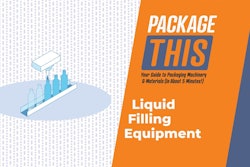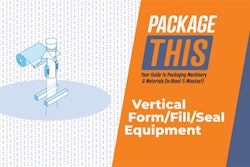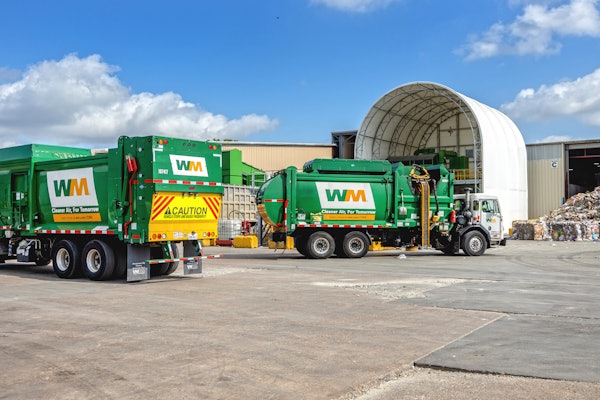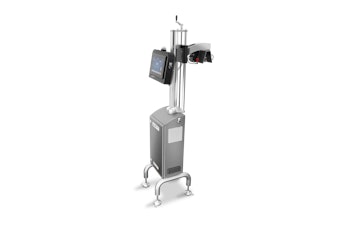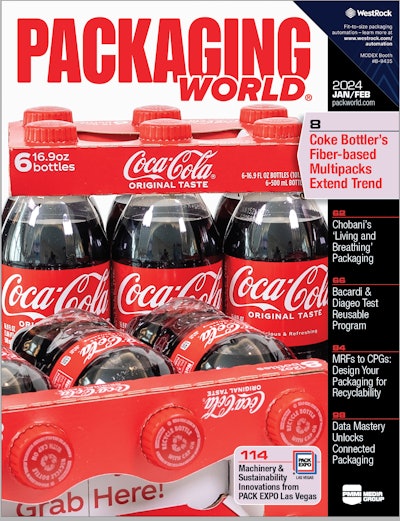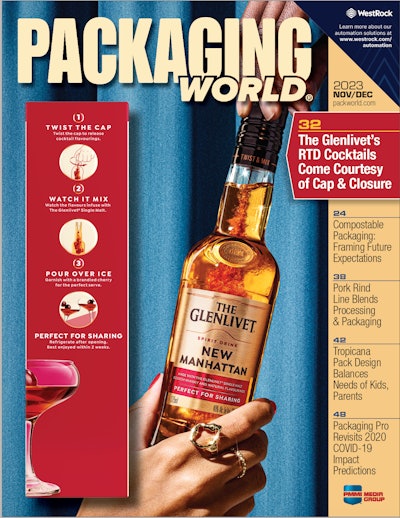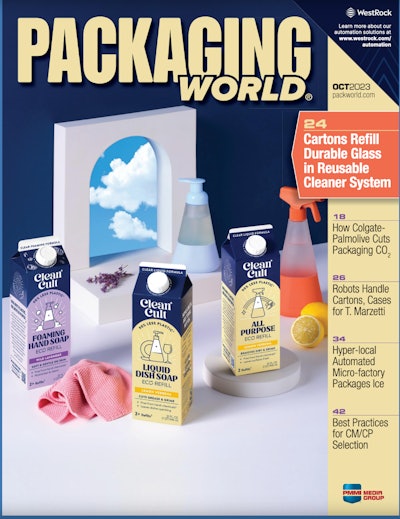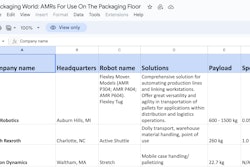The days of companies holding all the power in the recruitment of talent are long over. Thad Price explores an area of workforce unPACKed with PMMI rarely touches on: the expense around recruiting, hiring, and onboarding. Essentially it's crucial to pitch your company as a great place to work, whereas, in the past, the onus was on the potential hire to sell themselves.
To subscribe, rate, review, and find more unPACKED podcast episodes, visit pmmi.org/podcast or find us on Apple Podcasts, Spotify, iHeart Radio, or wherever you listen to your podcasts.
Sean Riley:
So with all the fancy introductions out of the way, welcome to the podcast, Thad.
Thad Price:
Sean, great to be here. Thank you so much for the invite.
Sean Riley:
Oh, the pleasure is all ours. So I guess to start things off, with the way everything is in the world today, how can companies recession proof their recruitment strategy?
Thad Price:
Well, the first advice that I usually give companies is to start from the beginning. And when we start from the beginning, the idea is to really think about their recruiting process as a sales process. And what that basically means is tracking through every stage of the hiring funnel from the individual process in which someone actually applies. They view a job, they apply for a job, the scheduling of interviews happens as well, and then at the end of the day there are these number three or four different other processes that happen before the actual offer letter is sent. And then folks either sign up and they submit the offer letter and say, "Yes, I'm ready to go," or they say, "Not so fast."
And so the first thing step is to ensure that you have a data driven approach through every step of that process, and that's more like a sales process. If you think about the idea of generating a sales lead, advertising your brand, and then to actually drive sales and to drive new accounts, at the end of the day all of these things happen through a sales process. Submitting a demo, there's a discovery call, there's contract negotiation that happens, and then at the end of the day you get a new customer. And so that process is the same process, it feels a lot like recruiting although a lot of companies don't necessarily think of recruiting as a sales process.
Sean Riley:
Interesting. So I guess with that in mind, why right now is it so hard to hire and after getting someone on board, retain, and what can companies do to attract more candidates in such a strained market?
Thad Price:
Yeah, great question. So the first thing to think about is this idea of recruiting as a sales process. That means you need a pipeline. So you need a pipeline of candidates that you can convert into hires at any given time. And the first part is is ensuring that you have this data driven approach to this hiring process, which is basically driven by building a candidate pipeline. Without driving the hires at the end of the process, you need to ensure that you have a pipeline of candidates that are constantly working through your process at any given time. So the first thing that I would say is we have to be proactive in attracting talent and we have to think about this process as an ongoing process. So much of hiring today is reactive. This person left, we need to make changes, whatever that may be. It's that reactive process instead of thinking it proactively like a sales process where you constantly want new customers and you want to be able to drive new accounts.
So right now it's so hard because it's a tight labor market. Although we've been seeing a few cracks in the market over the last few reports, it's still very, very, very tight. And so the biggest thing right now is there's more competition than ever for talent, especially when you think of different moves in the labor market for the frontline and essential workers, and that is this idea of being able to turn on an app at any given time and generate income. And so when you think of Covid and the acceleration of delivery-based services and other services where folks were having things delivered to their home, that created this huge amount of demand for folks to deliver, whether it's food, whether it's packages, whatever it may be. And so suddenly there was a lot more demand in these marketplaces for labor.
And from that perspective, it really created this way for folks to actually turn on an app and generate income and that puts pressure on more of the frontline and essential worker labor market because this didn't exist, at the rate that it exists now, three to four years ago. COVID accelerated a lot of it. So when you think of this idea of being able to attract talent and trying to hire, we have to think of it as the labor market is very different than it's ever been. This idea being able to turn on an app and being able to work whenever you want, people want flexibility. So the first conversation I have with companies is are you offering flexibility? Are you providing something that's different than what's in the market today? If you think of app-based marketplaces, you turn it on, work when you want to work, and shut it off when you don't, a lot of employers aren't able to provide that flexibility.
But there's something else you can provide and that is a career opportunity. App-based marketplaces are very transactional, you turn it off and turn it on, you really can't grow a career. And so I always focus the energy and the conversations with companies about how are you helping your team members grow their career? They want more than what they have today. And you have to be very, very deliberate in ensuring that you're having those conversations of what folks want so that they can actually grow their career and you're providing something that's different than what's in the market today.
Sean Riley:
Okay, so that makes complete sense and I get that from that perspective. So I guess sort of pivoting just a little tiny bit, how much is it really costing companies right now to go out and to hire these workers based on the stats and the data that you have?
Thad Price:
So what we typically find is this is just the marketing cost. This isn't time. This is just actual marketing cost of hiring an essential worker. It's roughly about $670. Of course, the cost to hire the wrong team member, that's not going to be effective, of course very high compared to the $670 that we're sharing. But we've been able to research this with a number of companies and we find that it's roughly about $670 to hire an essential worker frontline team member. So this has increased a lot over a number of years, and it's harder than we've ever seen it.
Sean Riley:
Wow. Yeah, and it's something that we talk about all the time so it's interesting to put a number on it, that in manufacturing where people are on the front lines it is very difficult to find and even harder to retain talent. So to hear that as the price point has got to be helpful for some of our listeners.
Thad Price:
I will say that SHRM reported that the cost a number of years ago, I forgot what year it was, was roughly on average $4,000 cost of hire. It's expensive to hire in general. But if you think about the impact of hiring the right team member, great people grow great companies, and it is about tracking the people that you need in order to grow your business and to take your business to new heights. From that perspective, you can't put a price on it if you think about how your business depends on the team members needed to grow their business.
Sean Riley:
We can't always rely on just the bottom line obviously. So the biggest thing, and you sort of touched on it and I touched on it earlier, is inflation and the predicted looming recession that are top of mind with everybody, particularly from a business perspective, but even consumers, people at home. So I guess, what are some ways that companies can address inflation and to boost employee satisfaction?
Thad Price:
So the first is the idea of having conversations about where you can go and grow with a company. Some refer to these as stay interviews where you're basically having conversations about addressing this idea of, "Hey, we want to keep you, we want to have a conversation about your career and we want to help you achieve what you're looking for." Like everything in life, everything starts with a conversation. You have to be very deliberate in having conversations so that folks think about, "Hey, is this new opportunity that I'm thinking about applying for, that I've been recruited for, is it better than what I have today?" And a lot of times if you have that conversation before a recruiter reaches out or you have that conversation before you think you're worried about one of your A players leaving, you can basically provide them with guidance and a plan to be able to achieve their career they're looking for.
But if you don't have that conversation, if you aren't deliberate about what that looks like for them, then there's a risk and there's a risk that they're going to be recruited to something that in their eyes may be better than what they have today. So I think it's really important to ensure if you aren't having one-on-ones regularly, you are, because you have to assume that everyone on your team is being recruited. But it's important because if you've had that conversation with a team member, you let them know where they can go and grow and how much it's worth for them, then there's a lower chance that a recruiter is going to be able to basically take them away and recruit them from your company. So I think again, like anything in life, conversation, I think that's really important. The other piece is flexibility. We've seen that providing flexibility is one of the keys.
Flexibility is number two. Number one is pay/wage, we see this from our job seeker data. And of course, providing flexibility is very important as number two. And so why that's important is so many companies look at this and they're like I can't provide flexibility. And the reason why they think that is because they're not thinking of it in their industry. If you think of someone that's working in your industry and you think of your competitive set, the businesses that you're fighting with for talent right now, you have to think about it as what is different than our industry? And I think so many people focus on flexibility as, oh, I have to provide all of this flexibility. And in certain industries it's just not realistic. However, there are ways you can address it within your industry so you can do more and provide it so it looks different than what exists from other companies. So compare to your competitive set, look at what you're offering and see if there's some areas that may not actually involve wage growth, but can provide a lot more benefits and connection to your team members.
Sean Riley:
So it really ties back to what you said earlier where you're constantly kind of selling your company. It's not just a hire and they're going to be thrilled that you hired them and that's that. You have to be constantly, like you've said, be recruiting and be selling the benefits of what you have to offer.
Thad Price:
That's right. Going back to this idea of a sales process, if you think of marketing and you think of product driven marketing, one of the keys is your competitive set, understanding who you're recruiting against, so to speak, in this landscape. And so in product marketing, one of the things that product marketers create is battle cards to help sales be more effective at selling and connecting their product with their audience. And so what I find fascinating about that is you could do the same thing in your recruiting process, your battle cards. Who are you competing with for talent? Can you create some battle cards to basically say, all right, here's how we're better. The reason why I like this process and the reason why I think it's very helpful for a lot of businesses, a couple reasons, one is have you ever done this before? Have you ever looked at your competitive set to see who you're competing with?
It's a terrific exercise to see, all right, well, if I'm not effective, if I'm not competing from a benefits perspective or a comp perspective well with my competitive set, I probably should fix that first. And then once you have that conversation, then you can really think about, all right, well, why would someone work for my company over another company? And that's a great conversation to have with recruiting teams, which is very similar to that sales experience as well when you're looking to actually close a deal and have someone actually sign a contract. Same thing with signing an offer. That person, that candidate, is making a decision to be a part of your company, to go and grow, and there's a connection that needs to incur in order to ensure there is success. So have that conversation, think about it as what are the benefits of working with your organization compared to another organization and celebrate them.
Sean Riley:
I like that. I like that a lot. Okay, so you've touched on some stats and some data that you have. I guess, what are some of the impactful or the really useful talent analytics tools that other people can use to assist with the decision making process of launching in a new geographic location?
Thad Price:
So an old statement I like is, if you're going to catch fish you need to fish where the fish are. And this goes with talent as well. I think what a lot of business leaders will make a decision on, we're going to open up a new location here, without actually digging into the talent landscape and understanding can I actually employ folks from this area? Is this workforce available, this skilled workforce available that will help me ensure that I'm reaching my business objectives? So the first thing is looking at the talent supply. One of the things we did in 2019, we won HR Tech Product of the year in 2019, we created and opened up our talent supply data. So a company can use Talroo, you can query certain locations and basically say what does the talent supply look like in said city for different roles?
And so that's really important because it's a little different, that real time exchange that's happened with the talent supply, it's a little different than the labor market stats. These are folks actually searching for jobs in certain areas. And so I think the ability to use talent analytics tools, definitely on the supply side when you're looking to expand, becomes really important to figure out am I going to have an issue staffing this new location? Sometimes it's hard because you've made that decision without understanding the talent landscape in a certain market, and then it's too late, and your recruiters are constantly having problems recruiting. Or, you're having to relocate folks from certain areas to be able to achieve your recruiting objectives.
Sean Riley:
Yeah, which is then just might be adding additional costs that people might not have even taken into consideration.
Thad Price:
That's right, absolutely.
Sean Riley:
Awesome. Well, we've really appreciate you taking some time out of your day to come on here and talk through some of this. We know we're in a bit of a labor crisis, particularly in packaging and processing, so you taking some time to come on here is going to be really helpful for our listeners. So thanks a lot, Thad.
Thad Price:
Thanks so much, Sean. It's great to spend some time with you today.






